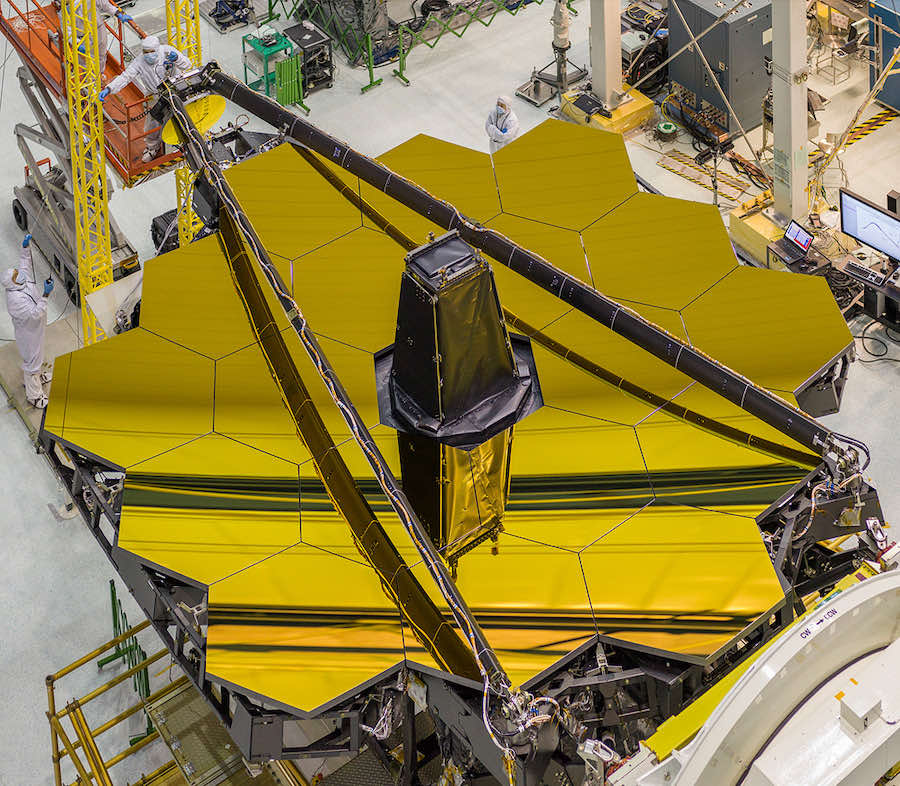STORY WRITTEN FOR CBS NEWS & USED WITH PERMISSION

A high-speed dust-size micrometeoroid slammed into one of the James Webb Space Telescope’s 18 primary mirror segments last month, causing a slight but noticeable effect on the segment’s performance, NASA said Wednesday. It was the fifth such impact detected since Webb’s Christmas Day launch.
Given the $10 billion telescope’s open design, with its mirrors exposed to space, engineers expected random hits by bits of space dust over the life of the observatory, but an impact between May 23 and 25 was larger than pre-flight models predicted.
After analyzing the C3 mirror segment’s post-impact performance, engineers sent commands to actuators on the back of the mirror to ever-so-slightly reposition it, counteracting most, but not all, of the impact’s observed results. Even with the hit, NASA said the telescope is still operating better than pre-flight requirements.
“After initial assessments, the team found the telescope is still performing at a level that exceeds all mission requirements despite a marginally detectable effect in the data,” NASA said in a blog post. “Thorough analysis and measurements are ongoing.”
The James Webb Space Telescope is the most advanced, most sensitive infrared observatory ever launched, equipped with a segmented 21.3-foot-wide primary mirror capable of detecting the faint, stretched-out light from the first generation of stars and galaxies to begin shining in the wake of the Big Bang.
The beryllium primary mirror is made up of 18 hexagonal sub-mirrors, each one 4.3 feet in diameter and coated with a thin layer of gold to maximise reflectivity. They are among the most perfectly fashioned optical elements ever made. If a segment was scaled up to the size of North America, the Rocky Mountains would be just 2 inches tall.
The micrometeoroid impacts have not caused any major delays in work to check out Webb’s four science instruments and NASA plans to unveil the first color images from the telescope on July 12 as previously planned.
Lee Feinberg, Webb optical telescope element manager at NASA’s Goddard Space Flight Center, said the team “expected that occasional micrometeoroid impacts would gracefully degrade telescope performance over time.
“Since launch, we have had four smaller measurable micrometeoroid strikes that were consistent with expectations and this one more recently that is larger than our degradation predictions assumed.”
He said engineers and scientists will use the data to fine-tune their models and “develop operational approaches to assure we maximize the imaging performance of Webb to the best extent possible for many years to come.”
Webb’s 18-segment primary mirror was designed to withstand micrometeoroid impacts from dust-size particles whizzing about the solar system. Simulations and actual impacts with mirror samples were used before launch to better understand the threat and the telescope’s ability to resist image-degrading damage.
Because each segment can be repositioned with extreme precision, engineers can effectively counteract some of the distortion cause by a significant impact after carefully analyzing reflected light. But, NASA said, “not all of the degradation can be cancelled out in this way.”
In any case, using updated models, protectively turning the observatory away from known meteor showers and other such events, NASA managers say the telescope can weather the environment and still carry out its mission. The impact will have no effect on plans to release the first images from Webb on July 12.
